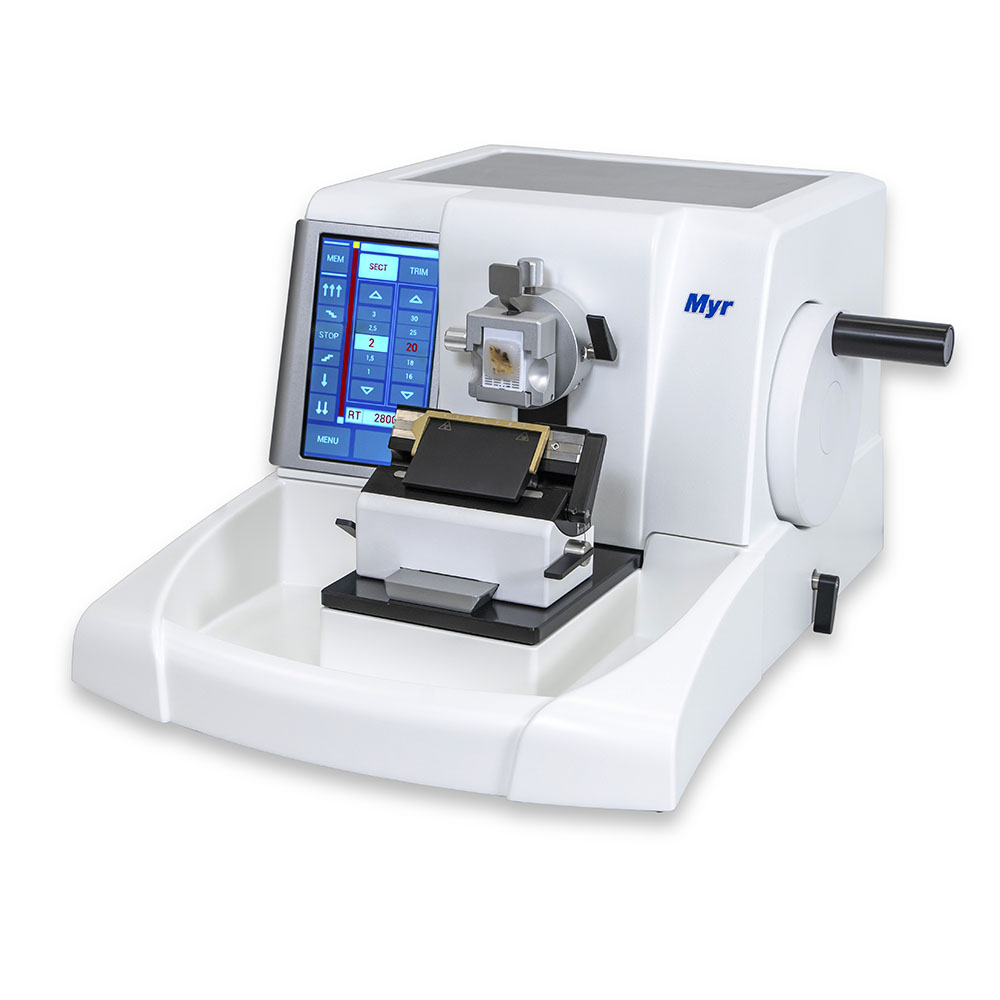Buying a Microtome? 5 Things to Consider
A microtome is considered the most highly personalized piece of lab equipment in a histology laboratory. Every histologist has their own techniques to achieve ideal tissue sections. Today more than ever, there are a wide variety of microtomes available for the lab technician to choose from. Although price is often a top consideration when choosing laboratory equipment, the buyer would be wise to consider the options and preferences of the technician in order to achieve top productivity and high quality slides.
 5 things to consider when purchasing a microtome
5 things to consider when purchasing a microtome
Ergonomics of the automated microtome
Some histologists need to have a more motorized microtome so that they do not need to turn the hand wheels of the microtome as much. There are options for semi-automated microtomes as well as fully automated microtomes. Semi-automated microtomes allow the technician to use automation for coarse advance while maintaining manual cutting of the microtome with the main hand wheel. Fully automated microtomes not only allow the technician to use automation for the coarse advance but also for the sectioning of the tissue. Automation can prevent physical abnormalities to occur in the technician’s wrists such as carpal tunnel.
Bi-directional Coarse Advance
Since every histologist cuts tissue differently, the feature of a bi-directional coarse advance is important. This feature enables the lab tech to be able to advance the specimen head by turning the small hand wheel in either direction allowing the histologist to turn the hand wheel in the manner that they are accustomed to.
Retraction Capability
Not all histologists like to have the option of retraction on their microtomes. Choosing a microtome that allows this feature to be turned on and off is always a good idea.
Type of Microtome Blade Holder
All microtomes come with blade holders. The blade holder of choice these days are disposable blade holders. There are two types of blades, low profile and high profile. Most blade holders only accommodate one type or the other; however, there are microtomes that come with disposable blade holders that have a removable insert so that the blade holder can accommodate either style of disposable blade. Also, ideally the disposable blade holder should have the feature to “push” used blades safely out of the blade holder in order to prevent the histologist from cutting their fingers. Another feature that the blade holder should possess is full horizontal movement of the upper blade holder to access the entire length of the disposable blade.
Microtome Sectioning Quick Release Specimen Clamp
The specimen clamp is what holds the tissue cassette on the specimen head to be sectioned. There are different styles of specimen clamps; however, what is referred to as a quick release clamp is the preferred type. This specimen clamp allows the histologist to quickly and easily switch embedded tissue blocks in and out of the specimen head for sectioning. Quick release clamps achieve this simply by using a lever at the top of the clamp.
While all microtomes no matter what type will cut tissue sections from embedding specimen blocks, these features tend to be more desirable by the histologists. Read more about our thick and thin sections histology and clearance angle microtome in our microtome series.
Budget considerations when buying a microtome
Other aspects to keep in mind when buying a microtome of course is your budget. Can your laboratory afford a new microtome or will you need to consider remanufactured microtomes? Remanufactured microtomes are a good option as long as they are purchased from a reputable company and come with a warranty. Another thing to remember is that once you purchase a microtome it is very important that your laboratory have preventative maintenance performed by a qualified service company. Preventative maintenance will keep your microtome functioning optimally. By taking all of these aspects into consideration, your laboratory will be able to select the appropriate microtome for your laboratory needs, budget and preferences of your technician.
About MES
Since 2002, Medical Equipment Source has been providing laboratory equipment services to private practices and independent laboratories across the country and the world, empowering them to run more efficiently while providing better patient outcomes.
From laboratory setups to lap equipment maintenance to consulting contracts, Medical Equipment Source provides a comprehensive range of solutions to physicians and practice managers looking to grow their business by offering their own in-house lab services. Medical Equipment Source provides help with lab and exam room furnishings, consumables, repair services, lab equipment and layout, and more.
Today, Medical Equipment Source is an authority in the physician-owned lab market, with clients in 49 states and 30 countries. Those clients range from physicians who have launched their own labs to lab technicians who have built their own spaces as well as hospitals, universities and reference laboratories